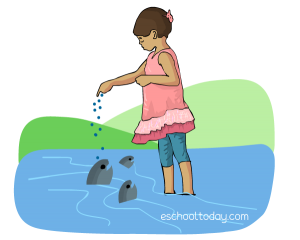- Aquaculture
What is Aquaculture?
Aquaculture involves the art, science, and business of breeding aquatic animals and plants in fresh or marine waters for human use. It also extends to the marketing of such organisms in a controlled environment.
Aquaculture contributed 43% of aquatic animal food for human consumption in 2007 (e.g. fish, crustaceans, and molluscs, but excluding mammals, reptiles, and aquatic plants) and is expected to grow further to meet the future demand.
Aquaculture comes from these two words:
“Aqua” (water) and “Culture” (to grow).
It is a kind of agriculture, and therefore, it requires inputs such as clean water and nutrients. Looking at the bigger picture, it also requires, storage for harvested produce, transportation, and marketing facilities. Inputs often depend on the species that are farmed. Species lower on the aquatic food chain usually require less input, as they feed on microorganisms and are fine in just clean water. More inputs such as fish or fishmeal, cereals, or grains are required, as we get higher on the food chain with species such as predatory groupers, salmon, or tuna.

When we think of aquaculture, we often think of fish farms. This is correct, although it may include other water animals such as clams and oysters. It also includes crops such as seaweed, often cultivated to feed water animals.
Aquaculture typically comes in two major forms.
Warmwater aquaculture: Raising plants and animals that do well in warm and fresh water. Examples are catfish, crayfish, sport fish, and ornamental fish.
Coldwater aquaculture: Raising plants and animals that do well in cool and fresh water. Examples are salmon and trout.
Aquaculture activities can also be classified according to their degree of intensity:
Intensive — involving the high-density culture of organisms, with regular and nutritionally complete feeding.
Semi-intensive — involving lower densities, with naturally occurring feed, and some direct feeding.
Extensive — involves a low density of organisms, often with naturally occurring feed.
Under these three areas, several water environments are required for specific species.
